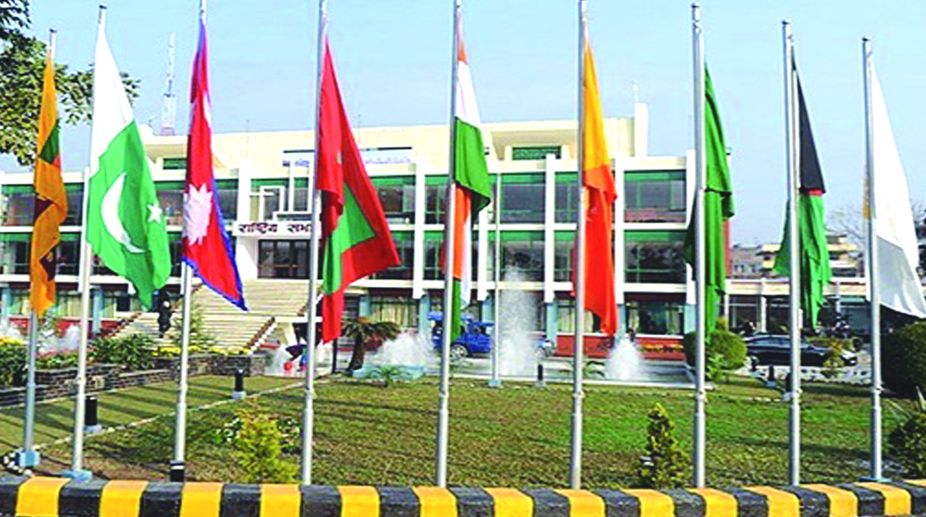EU leaders agree for new sanctions on Iran
European Union leaders agreed late on Wednesday on new sanctions targeting Iran for the direct attack on Israel.

The Tenth South Asia Economic Summit was concluded in Kathmandu this month and underscored deepening economic integration for inclusive and sustainable development in the region. This call for deepening economic integration in the region is rational at a time when the world’s most influential economic alliances are grappling with uncertainties. While Brexit has proved a shock to the European Union (EU), the North American Free Trade Agreement (NAFTA), the single largest trade alliance in the globe, is under threat of breaking down amid tough renegotiations.
It is free trade that drives the process of economic integration. But it took more than two decades for South Asian countries to reach the initial phase of a free trade area (FTA). The regional FTA took-off in the mid-90s with a positive-list approach that included a few select products for reduced tariffs by member countries under the preliminary preferential trading system. This was followed by a transformation to a negative list approach that excluded products sensitive to respective countries from the tariff reduction commitment under the South Asian Free Trade Agreement (Safta) in 2004.
Although this transformation is a breakthrough for economic integration in the region, progress has been lacklustre. South Asian intra-regional trade has grown from 3 per cent when Safta commenced to barely 6 per cent of their total trade currently. Countries have failed to diversify trade with other partners in the region except in the case of India. This has indicated an extremely slow advancement in intra-regional trade compared to the progress made by South-East Asian integration which experienced a doubling of intra-regional trade between 1993 and 2003.
Advertisement
The advancement of South Asian integration through trade will depend on two major dynamisms. First is the commitment to speeding up regional connectivity. Most South Asian countries are still in the grip of high transaction costs and inefficient physical distribution in this age of containerisation and e-commerce. There is no alternative other than connecting to as many countries as possible for the enhancement of trade. The transportation network within the “chicken neck” that leads to the Bay of Bengal corridor can be a role model for this purpose as it can facilitate a connection for trade among India, Bangladesh, Nepal, Bhutan and Sri Lanka. This connectivity paradigm can set an example for extending trade links in other directions within the region. Second, South Asian countries will have to quash the protected trade regimes that have been hindering the notion of regional integration. South Asia is still under a restrictive trade regime as reflected by the tariff trade restrictiveness index (TTRI) which is over 11 percent, a number far above the transitional economies and industrialised economies.
While the protective tariff regime has been an impediment to the overall regional trading system so far, intra-regional trade has also been hampered by the unrelenting non-tariff barriers and the sensitive lists imposed upon partners within the region. The solution to the persistent non-tariff measures will be determined by devotion to harmonising rules relating to customs, sanitary and phytosanitary standards, and the environment which are also partially under the consideration of the Saarc agenda. But, more importantly, there is no possibility of a substantial growth in intra-regional trade without an earnest effort from all countries to reduce the products in the sensitive list, as it discourages trade complementarity and intra-industry trade or trading of differentiated products.
The countries in South Asia can aim for a customs union which could be the next phase of economic integration. Under this system, there will be a uniform tariff regime for trading with countries beyond their alliance, in addition to free trade amongst themselves. This higher stage of economic integration resembles a combination of both free trade and protection. On the one hand, it will promote unrestricted trade among countries in the region. On the other hand, it will protect the coalition from external competition through a uniform tariff regime.
Integration can encourage regional production. However, expansion of regional production will depend strictly on the investment policies of the respective countries which are still inflexible except for in the case of India.
Subsequently, the consolidated FTA and customs union should create an environment for free flow of capital, technology, and workers as well. This will lead to the next phase of economic integration or the system of a common market. The existing economic linkages between India and Nepal which reflects a common market can be exemplary for shaping the idea within the region.
Yet, the ability to gain from this sort of integration hinges on most South Asian nations’ efforts to break the rigid and labour biased laws which have been impeding the manufacturing sector that is crucial to inclusive and sustainable development in the region. Achieving this state of economic affairs can pave the way to a uniform fiscal and monetary system, eventually leading to a complete economic union.
(The writer is an associate professor of economics at Tribhuvan University.)
Advertisement